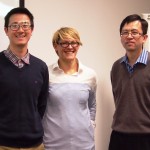This blog is continued from Thinking Systems #10
In the last three blogs we saw that management and restoration of the entities we call ecosystems is problematic and driven by assumptions, myths and values. This is particularly so at the level of species and populations. Conservation biology and restoration ecology have had their local successes, but overall, the response to major initiatives has been poor. Global biodiversity continues to decline and, while there are strong calls to restore landscapes, going back to a prior state seems very difficult. Continue reading








